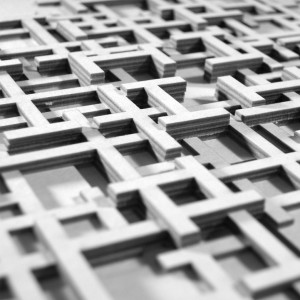‘Principles of urban configuration. The alternative of Aldo van Eyck to the design of the modern city.”
Article and public exhibition.
‘Escuela Técnica Superior de Arquitectura de Madrid’, UPM.
November 2013
Luis Palacios, as part of his Advanced Architectural Design PhD, presented and discussed the article: ‘Principles of urban configuration’ at the PhD research meetings fest. Here is the summary that was provided to those who attended the event:
‘In 1959, Aldo van Eyck presented to the Otterlo Congress ‘The story of another idea’ as a criticism of modern planning. Over the following years, he thought over alternative ideas to the CIAM hypotheses, influenced by the study of archaic cultures, the valuation of the traditional city or its his interest for the new cutting-edge artists. In 1962, he included his approach in the article ‘Steps towards a configurative discipline’ published in the Dutch magazine Forum. In a complex text, Van Eyck didn’t clarify which principles continue to define the contemporary city, but he did announce a new configuration that combines architecture and urban planning in a single discipline.
The presented article aims, through reading original texts, transcripts of conferences and interpretations in later books, to define the underlying principles of configuration not only in the projects of Eldo van Eyck, but also in those of his disciples Herman Hertzberger and Piet Blom, which made his interpretation a design method applicable to all scales, from the house to the city and vice versa. ‘
The definition of the 7 principles of configuration -association, reciprocity, urbanity, comprehensibility, transmutability and relativity – represent the contribution of research, whose interest is seeking applications for current urban design, in order to propose new ways to configure the contemporary city.





